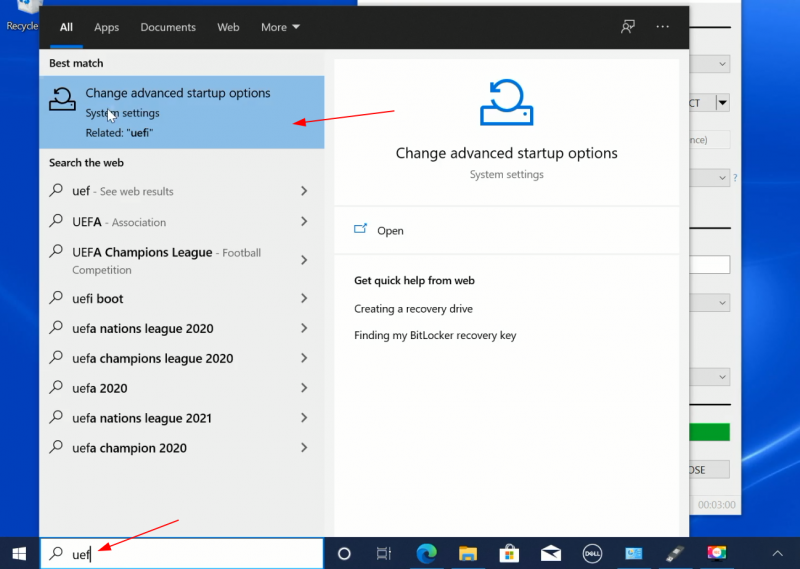Brief: This beginner’s guide shows you how to safely remove Ubuntu or any other Linux distribution from Windows dual-boot.
Trust me, installing Ubuntu dual-boot with Windows is not such a difficult task. Similarly, removing Ubuntu from dual booting isn’t that complicated either.
In both cases, you should take a little precaution with disk partitions. Having proper Windows recovery and backups always helps.
In this tutorial, I will show you the steps to uninstall Ubuntu from Windows dual boot. The steps must be equally valid for any other Linux distribution, be it Linux Mint, Debian, Fedora, Arch, etc.
Safely uninstall Ubuntu from
Windows dual-boot mode
The process consists of two parts:
- Change the boot order in the UEFI settings and give priority to the Windows Boot Manager. You can also remove the Grub entry from the UEFI settings, if your system offers this option. If that doesn’t work, you’ll have to repair the boot with a Windows startup disk.
- Delete Ubuntu partition from Windows.
As a last resort, you should have a Windows boot disk or recovery disc so that you can use it to repair booting after removing Ubuntu (if necessary).
Part 1: Run a sanity check and make Windows the default boot manager
I want you to have as little trouble as possible. And therefore I recommend changing the boot settings and making the Windows boot manager the default option for booting.
Let me explain a little bit here. When you install Ubuntu or some other Linux, you add the Grub bootloader to your boot configuration and make it the default.
So, now your system has two boot loaders or boot manager (whatever you want to call it). Grub gives you the option to boot into Ubuntu or Windows.
The Windows boot
manager allows you to boot directly into Windows. And this is what you’re going to use here.
Step 1: Access UEFI boot settings
Before you go ahead and delete the Linux partition, it will be a smart move to check if you can make Windows boot manager the default boot option. This way, when you remove Linux, your boot process won’t be affected.
Access UEFI settings from Windows. Find UEFI and go to Change advanced startup
options:

Click Restart Now
: On the next blue screen, select Troubleshoot:
Select Advanced options below
:
On the next screen, Select UEFI Firmware Settings
:
Press the reset button on the next screen
:
Step 2:
Move the Windows Boot Manager up in the boot order
Now your system will boot into the UEFI settings. Now, the next screen will look different for different systems and manufacturers. You have to look for the boot tab here.
On my predatory Acer, it looks like the image below. Here, use the arrow keys to select the Windows Boot Manager and press F5 to move up the order. Press F10 to save and exit.
Now, your system should boot directly into Windows. To check, restart your system a couple of times and see if the system boots into Windows without showing the Linux grub screen.
If that happens, you can proceed to the next step, which is to delete the Linux partition and reclaim its disk space.
Part 2: Deleting
Linux Partition on Windows
Let’s see how to delete Linux partition and extend your Windows disk with free space available afterwards
.
Step 1: Go to Disk Management
Log in to Windows. Press Windows+R and type diskmgmt.msc in the dialog box. This will open the Windows Disk Management tool.
Step 2: Identify
Linux partition
Since you installed Linux, it will be easy for you to recognize
Linux partition by its size.
Another suggestion to identify Linux partition is to look for those that do not have a file system and drive number. Windows partitions are labeled with a drive number, such as C, D, E, etc., and usually use the NTFS or FAT file system.
As you can see, I have three Linux partitions here, as I created root, swap, and home separately when I installed Ubuntu.
Step
3
: Delete Linux partition Select the
Linux partition(s), right-click on them and opt for the Delete Volume option
.
It will throw a warning at you: simply select Yes here
.
Step 4: Extend Windows partition
The deleted partitions will now be available as a piece of free space. You can extend the existing volume or create a new Windows partition from it.
I suggest you create a new drive (or volume or partition, whatever you want to call it) as this will be easier if you decide to reboot Linux with
Windows.
I hope this guide helped you safely remove Ubuntu from Windows dual boot. Feel free to ask any questions or make a suggestion.

